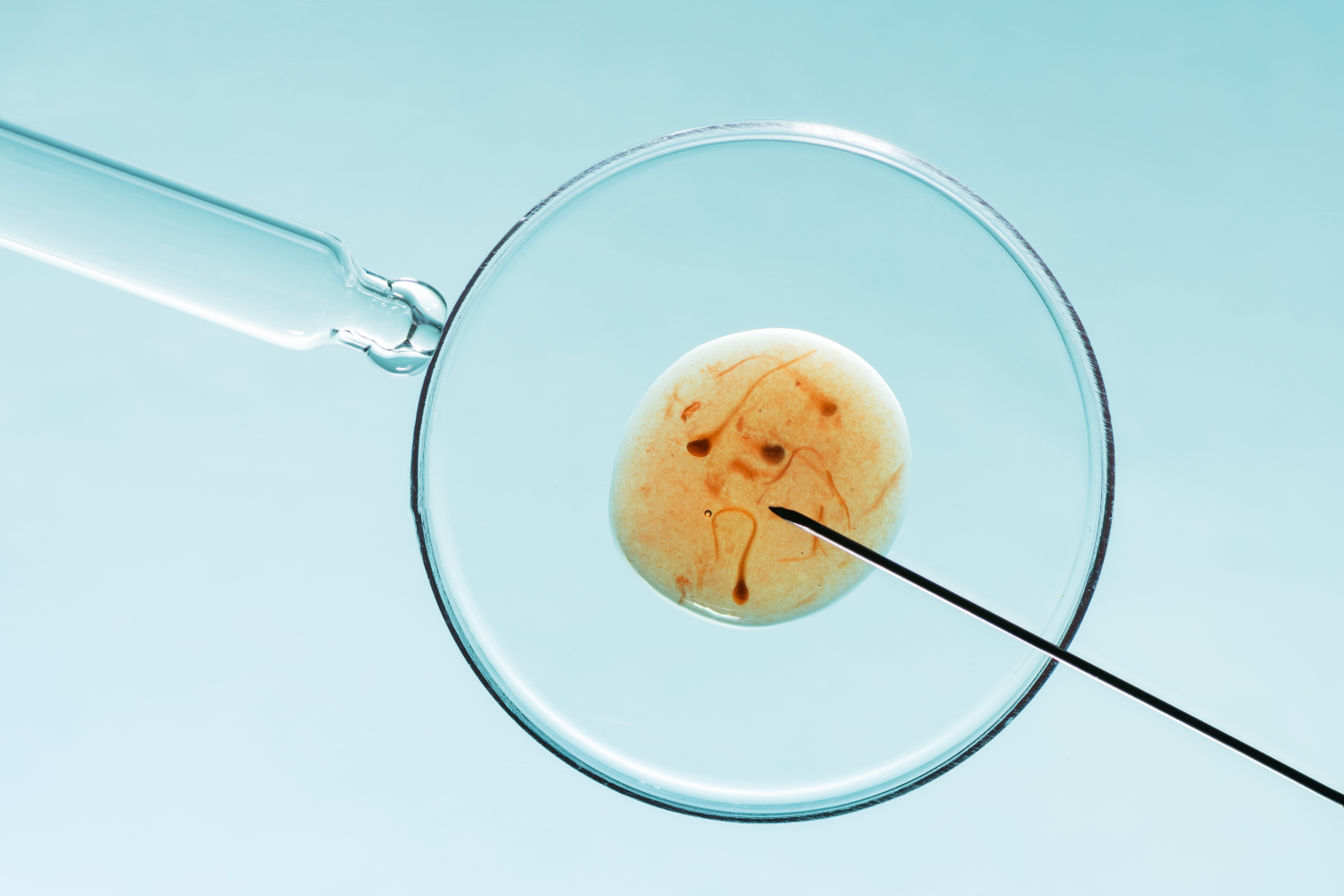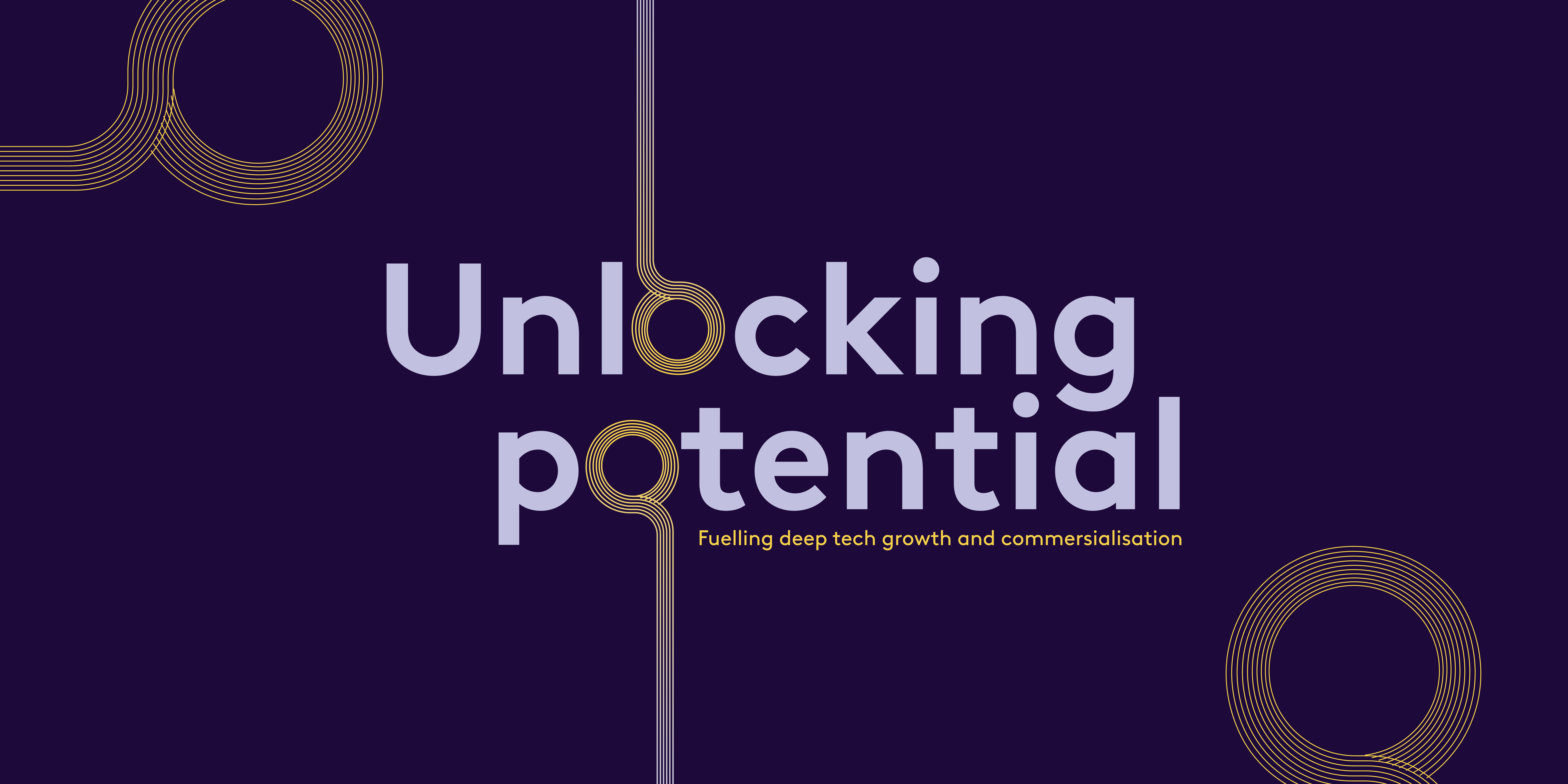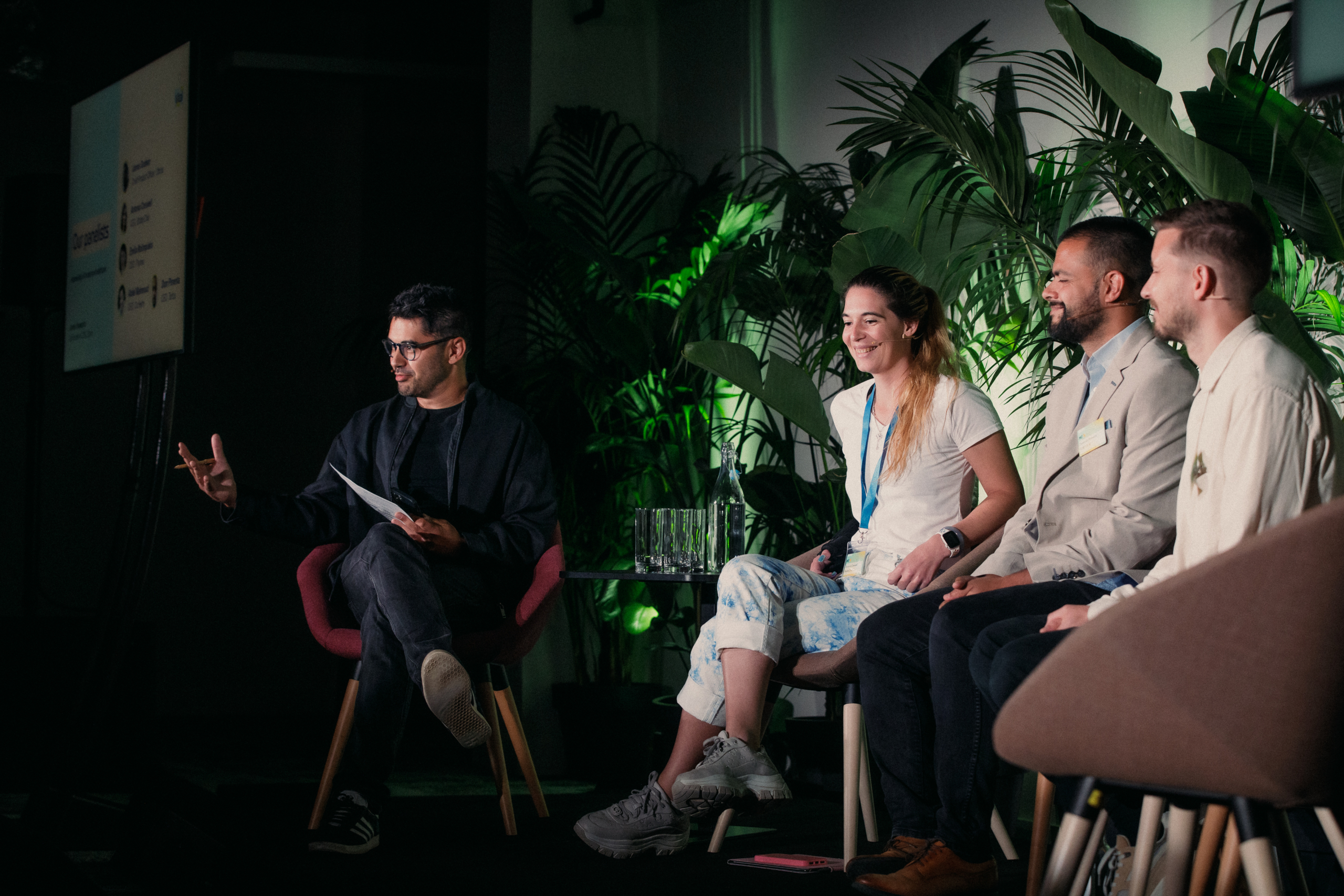Nemesis Bio: using CRISPR-Cas9 to tackle antibiotic resistance
Frank Massam, PhD and Professor Conrad Lichtenstein, PhD are co-founders of Nemesis Bioscience. This biopharmaceutical company is developing DNA therapeutics to make existing antibiotics work again to prevent the spread of resistance genes and protect the efficacy of new antibiotics.
Huge leaps have been made in DNA sequencing, DNA synthesis and gene editing space, enabling progress in fields like gene therapy, synthetic biology and biotherapeutics. Despite all this progress, there is significant cutting edge science that is locked down in the R&D labs.
Uzma Choudry, of the Octopus Ventures Deep Tech team, spoke to Conrad and Frank about the latest developments and the future of gene editing technologies.
Could you outline why CRISPR-Cas9 is a disruptive technology, compared to existing gene editing techniques?
The advantage of CRISPR-Cas9 over other gene editing technologies is that you only need to make modifications to an RNA sequence. This can be done very quickly in order to achieve a new sequence specificity. Other methods, like Zinc Finger Nucleases and TALENs, require significant amounts of protein engineering.
What other factors make this DNA editing technology superior to others? I’ve heard that CRISPR-Cas9 can be used in silencing genes as well as editing them.
Yes, it has a lot more ability and CRISPR-Cas9-based silencing is one such example. Normally it makes double strand breaks, but you can modify the enzyme to make it nick, to act as a recombinase, or to make it a repressor protein that down-regulates gene expression.
There has been a lot of hype around CRISPR-Cas9 and other gene editing technologies. At a high-level, what is the potential of this technology over the next two to three decades?
Well, the immediate application is in using it to perform reverse genetics: you can manipulate a target DNA sequence in a whole genome and delete a gene or replace a gene. That technology already exists and has been done by seeking to achieve double reciprocal homologous recombination with an input DNA sequence that you introduce to a cell. CRISPR-Cas9 makes the process of double strand break repair recombination that you’re relying upon much more efficient. Without it, you’re relying on spontaneous breaks in the DNA that happen to be near the locus you want to manipulate. CRISPR-Cas9 can also be used for massive chromosomal deletions.
It also has many applications in genome editing which will unfold over the next two to three decades. All sorts of miraculous new things will have been discovered by then. Thirty years is a very, very long time in molecular biology, so it’s hard to predict.
We’re seeing clinical trials in humans being approved both in Europe and the US. What are the commercial applications that you see gaining momentum?
Firstly, there are some serious ethical barriers to be overcome if one is talking about germline (embryo) gene therapy in human beings. Existing technology is about detecting mutations and then using prenatal genetic diagnosis and in vitro fertilization to select against any embryos that carry the mutation. For now, this is still the best way of doing it.
When you start getting into germline gene therapy on human beings, actually changing the composition of germline genome, there are some big ethical barriers to overcome. It’s not necessarily the best way to go towards curing genetic disease. Personally, I’m against it. I don’t think it’s ethical and I don’t think selective breeding of human beings is a good idea.
I completely agree with that.
There are agricultural applications in terms of animal/livestock breeding. We’ve always been artificially selecting animals through selective breeding. Now we can do it by artificial variation. But there are also applications in engineering bacteria for industrial applications: for example biofuel production.
And synthetic biology?
There are other ways to do synthetic biology, but CRISPR-Cas9 technology could make genetic modification of bacterial chromosomes more efficient.
There has been some discussion about the use of DNA editing technologies like CRISPR-Cas9 for resurrection of extinct species. What are your thoughts on that? And what other applications might emerge outside of therapeutics?
In terms of bacterial manipulation, people are already synthesizing whole genomes. Craig Venter did that a few years ago. People are playing around with manipulating the genetic code to add the coding for additional amino acids and adding novel new basis. That could lend itself to developing a new synthetic bacterium that, when it escapes, its genes would be useless in another environment making it safe. It would also increases our repertoire of amino acids that could be engineered into proteins. None of that really requires CRISPR-Cas9 technology however.
When it comes to bacteria, it’s not clear to me that in the very long term there’s any particular benefit to using DNA editing technology. There remains a benefit for manipulating animal genomes though – deleting genes involved in making pigs useful as organ donors, for example.
The first clinical trials approved are for treatment of blindness and beta-thalassemia. These come under somatic gene therapy, not germline.
Yes, there are clear applications for somatic gene therapy because it makes the gene editing or the gene replacement more efficient. The big problem, of course is trying to re-engineer all of the somatic cells in a human being. That’s clearly impossible. You begin with soluble cells, so you don’t look at hard tissue like muscle or lung, liver, brain or heart: you go for blood. Blood is a liquid tissue and, sure, you use it to cure sickle cell anaemia and beta thalassemia. But what you’re needing to do is firstly remove cells from the body, perform the gene therapy, then grow the cells in vitro, and finally reintroduce them as stem cells. You seek to at least add a sufficient number of them so that there will be enough of the new cells you introduced to make some blood that is wild type. That’s again for single mendelian genetic diseases.
We’ve touched on microbiome editing which is the space that you (NemesisBio) are in. Why do you find this an exciting space?
We’re using the fact that you can use CRISPR-Cas9 to inactivate any target DNA sequence. Furthermore, if you use a number of different guide-RNAs, you can target multiple DNA sequences. We’re not only targetting the inactivation of antibiotic resistance genes in the microbiome, but also pathogenic bacteria containing multiple antibiotic resistance genes. We have a vector that will deliver the CRISPR-Cas9 nucleus plus a suite of guide-RNAs. These will allow the targeted inactivation of a number of different antibiotic resistance genes. The bacteria infecting the patient can then be treated with an antibiotic that the bacterium was hitherto resistant to.
We can also use it to kill bacteria directly. This application could be used to rebalance the microbiome.
You’ve mentioned that some people are taking the approach of directly killing the bacteria and I know that you have an interesting view on that as a team.
Killing directly provides a new way for bacteria to be selected and will drive resistance. In our technology the delivery of the DNA that activates the antibiotic resistance gene is selectively neutral until you apply the antibiotic. Then there’s selection by the antibiotic that will kill the bacteria. There could well be some subsequent downstream selection against that, but we think that the selection pressure will be less strong.
Yes, that makes sense. What attracted you to the antibiotic resistance space?
Until recently there hasn’t been much success in developing new antibiotics – it’s expensive and takes a lot of time – and yet there are stockpiles of existing antibiotics that bacteria have become resistant to. Those antibiotics are well studied and approved and safe. The only reason they’re not used is because bacteria are resistant to them, and so if we can reverse that resistance, we resurrect the use of all of these stockpiled antibiotics.
Could this become a one-shot treatment in some cases? I’m thinking of certain somatic cell therapies that replace diseased cells with a stable population of healthy altered cells that no longer need an ongoing treatment. If so, what does that mean for pharma that rely on recurring revenues from lifetime use of drugs for chronic conditions?
So if you cure cystic fibrosis, or you kill sickle cell anaemia, you threaten the market of people who make drugs to treat sickle cell anaemia? Yes, but you know, that’s true of any new drug that comes along. The better drug prevails. Rather than performing surgery on a patient’s organs you provide surgery on their genome. Once you’ve operated on a patient, that means they don’t need to take drugs.
What are the big challenges you’re facing? Commercial challenges, IP, regulators (FDA etc.) and ethical challenges?
I think it’s still in dispute who owns the IP. There’s a contest going on between MIT and the University of California over the very broad aspects of the patent of the application. I imagine when that’s decided on it’ll just be a question of new companies coming in who have particular specialised applications paying a licensing fee to either MIT or California. Or maybe their claims will be considered so broad that they won’t hold. I don’t know how that’s going to pan out.
In terms of other applications, there’s a still a long-term challenge in terms of somatic gene therapy. If you wanted to cure genetic disease, how do you introduce the DNA to every cell in the organ or tissue? That’s not a CRISPR-Cas9 question, that’s a delivery question. With regard to germline gene therapy, I think that’s unethical to pursue.
The regulators pretty much respond to new innovations by changing their regulatory framework. They have to because what’s new to them are biological therapeutics. First, with small molecules you do pharmacokinetics, pharmacodynamics, toxicology and testing. (Toxicity before efficacy.) Then you move on to the biological therapeutics that are proteins. Those are things like monoclonal antibodies and they’re much larger molecules. They need the appropriate clinical trials to test their efficacy. DNA therapeutics is really a different area and will require a new regulatory framework. For example, much of what we want to do in a clinical trial doesn’t really fit the model of pharmacokinetics and pharmacodynamics. In terms of what we’re seeking to do, the current regulatory framework for Phase 1, 2 and 3 clinical trials doesn’t really fit. But the regulators are very amenable to responding to and moving with the times.
CRISPR-Cas9 attracted a ton of private investment quite early on. What do you think caused this? Hype or just excitement around the technology?
Well, it’s just the most extraordinary gift that nature’s provided. (The previous natural gift in the area of cutting DNA was restriction endonucleases.) CRISPR was discovered by an observation relating to bacterial behaviour: that bacteria have an innate immune system that protects them from virus/phage infection by cutting phage DNA when it comes in. This has even more application than restriction enzymes in all of the areas we’ve just been discussing. There have been tremendous developments just in the last 8-10 years.
How do you think the value of IP will evolve and change? Will the core IP be less valuable than downstream IP covering specific targets and applications?
I think it will be tailored more to specific applications. IP is written like a Russian doll, ever more narrowly defined. In the end, it’s the smallest doll in the middle that has the most exquisitely refined application that prevails.














